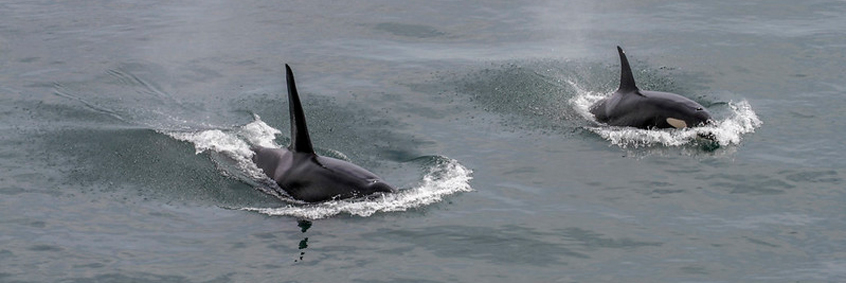
Southern Resident Killer Whale science and conservation project
Gulf Islands National Park Reserve
The marine waters around Gulf Islands National Park Reserve are home to a diverse array of marine species, from the smallest forage fish to some of the largest sharks and whales. Through the Southern Resident Killer Whale research project, Parks Canada is supporting the recovery of endangered killer whales and the species and ecosystems that support them.
The Southern Resident Killer Whale Science and Conservation project includes research projects that address the three threats to their survival: prey availability, physical and acoustic disturbance, and contaminants.
Southern Resident Killer Whale Monitoring
Southern Resident Killer Whales
The marine waters of and around Gulf Islands National Park Reserve provide important year-round habitat for Southern Resident Killer Whales to eat, rest and socialize. The Southern Resident Killer Whale population is endangered under Canada’s Species at Risk Act, with only 73 individuals remaining (as of September 2021).
Parks Canada is working in collaboration with Indigenous partners, other federal departments and non-government organizations to gain a better understanding of the distribution and presence of Southern Resident Killer Whales in and around Gulf Islands National Park Reserve. This work supports species at risk recovery.
Quick Facts
- Southern Resident Killer Whales are fish-eaters. Chinook Salmon is an important prey for them year-round.
- These whales are incredible hunters! Using echolocation, Southern Resident Killer Whales can select for Chinook and Chum Salmon very efficiently.
- Southern Resident Killer Whales are very social animals and generally stick with the same family unit, called a matriline, for their whole lives.
- Males Southern Resident Killer can live 50-60 years and females for 90 years or more. The oldest Southern Resident Killer Whale, Granny (J-2), was estimated to be 105 years old when she died.
Research methods
Southern Resident Killer Whale Visual and Acoustic Surveys
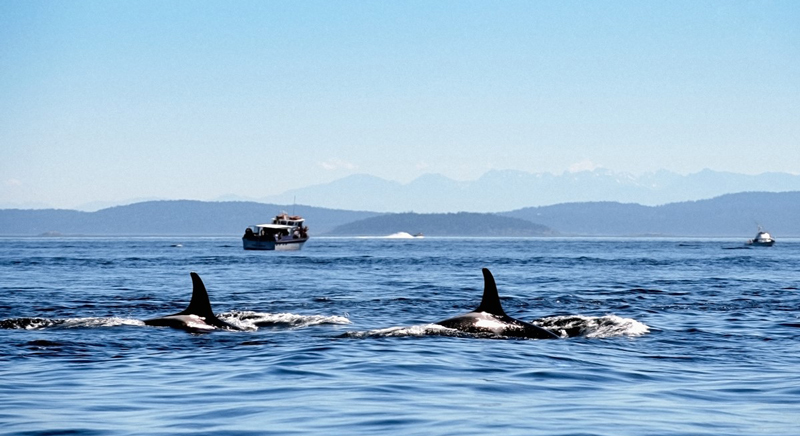
Parks Canada uses both visual and acoustic surveys to monitor Southern Resident Killer Whale presence, distribution and abundance. This information helps researchers understand where the killer whales are in the Southern Gulf Islands throughout the year.
Visual surveys are conducted using special binoculars and cameras with telephoto lenses. Acoustic surveys are conducted using a portable hydrophone system. The hydrophone system allows researchers to listen for whale vocalizations (clicks, whistles) underwater. Different groups of whales have different dialects (or languages). With the sound captured by the hydrophone, researchers are able to identify groups based on their unique vocalizations.
Have you ever wondered what a day in the life of a Parks Canada scientist is like? Watch “Field Notes: Recovering Southern Resident Killer Whales” and join Parks Canada Ecosystem Scientists behind the scenes while they research the whales and their surroundings in Gulf Islands National Park Reserve.
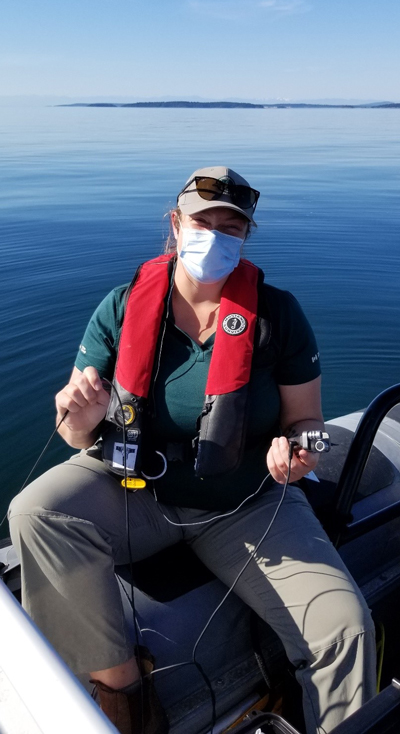
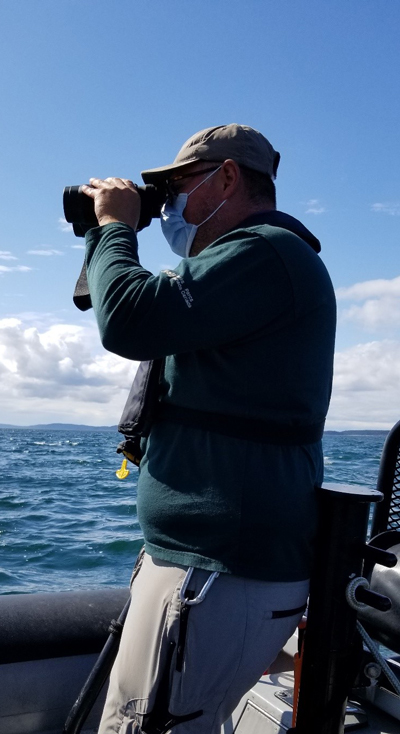
Pinniped surveys
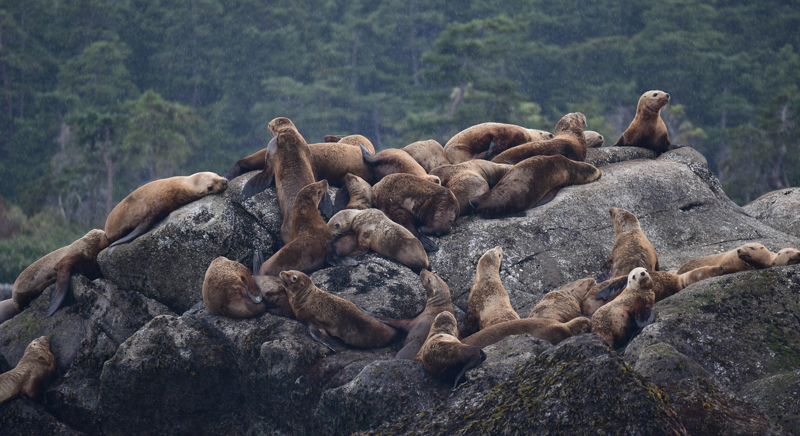
Pinnipeds like Steller’s Sea Lions and Harbour Seals can be found basking in large groups on rocky outcrops known as haul-outs. Like Southern Resident Killer Whales, Steller’s Sea Lions and Harbour Seals also like to eat salmon. Parks Canada is conducting research on pinnipeds to better understand their diet and their distribution in Gulf Islands National Park Reserve. Using telephoto camera lenses, researchers are able to record the number of pinnipeds present in an area. If any of the animals are entangled or injured they are reported to Fisheries and Oceans Canada immediately.
In collaboration with Fisheries and Oceans Canada, Parks Canada is also collecting scat samples to determine how much of pinniped diets overlap with Southern Resident Killer Whale diets.
How can you help? Visitors can help by reporting any incidents involving marine mammals (that you overserved or were involved in) to Fisheries and Oceans Canada’s 24/7 Observe, Record, Report Line:
Forage fish surveys
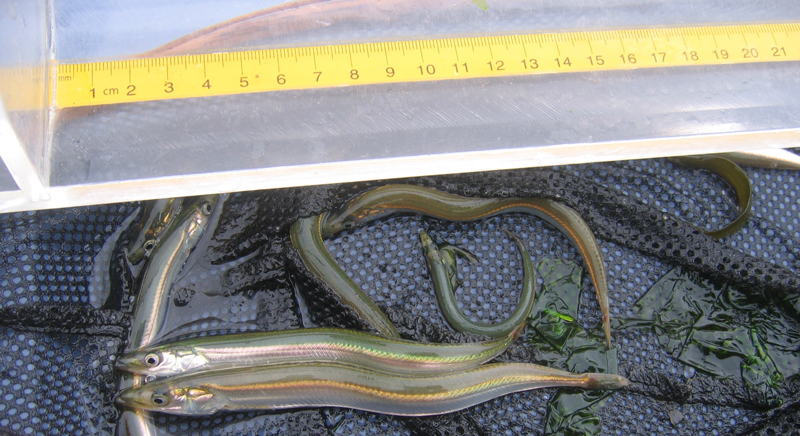
Chinook Salmon mostly eat forage fish. Forage fish, like Pacific Sand Lance and Surf Smelt, are small fish that occur in large numbers in the Pacific Ocean. Forage fish are important indicators of ecosystem health, and their abundance will have direct impacts on Chinook salmon.
Parks Canada is collaborating on projects focused on forage fish health. These projects include:
- Identifying forage fish habitat through visual egg surveys and environmental DNA surveys;
- Creating beach sediment catalogues to track changes and identify areas for restoration and;
- Studying contaminants in forage fish tissue to gain more knowledge on how contaminants are magnified up the food web.
How can you help Southern Resident Killer Whales?
Southern Resident Killer Whales are endangered. When you are boating or paddling in and around Gulf Islands National Park Reserve you may encounter Southern Resident Killer Whales. Take the actions below to protect the killer whales. Your participation is essential.
- Stay 400m away from Killer Whales when visiting Gulf Islands National Park Reserve. It's the law.
- Do not enter Interim Sanctuary Zones off Pender Island and Saturna Island.
- In effect from June 1 to November 30.
- No fishing or boating in interim sanctuary zones.
- Human-powered vessels (kayaks, canoes, stand up paddle boards, etc.) may use a 20 metre transit corridor along the coast.
- Be aware of Southern Resident Killer Whale protection measures in place around the Southern Gulf Islands.
- Be Whale Wise. For more information on the best ways to help whales while on the water, please visit Be Whale Wise and See a Blow? Go Slow!
- Enjoy shore based whale watching on the Whale Trail. Check out thewhaletrail.org for location information.
- Report your sightings: You can support Southern Resident Killer Whale research by reporting your whale sightings to the BC Cetacean Sightings Network. Download the WhaleReport App or call 1-866-I-SAW-ONE.
- Please report any violations or incidents involving marine mammals (that you overserved or were involved in) to Fisheries and Oceans Canada’s 24/7 Observe, Record, Report Line:
Related links
- Date modified :